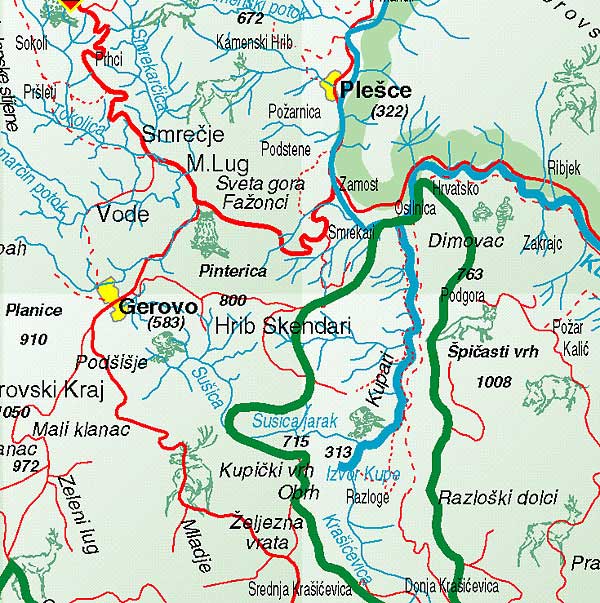From the second half of the 16th century, the master of Gorski kotar was Stephen Frankopan of Ozalj, who signed an agreement with Nikola Zrinski in 1544 on mutual inheritance of properties.
During that time, Turks were burning and pillaging the settlements in Gorski kotar and abducting the inhabitants. Infiltrating along the valley of Kupa river they entered Delnice, Lokve, Mrkopalj, and on the other side, across Vinodol, they took Lic, Fuzine, Lokve, Brod, Gerovo, Cabar, all the way up to the border of Carniola. The population lived in constant fear of the Turks, and the areas below the Kupa river and around Moravice were deserted.
When Stephen of Ozalj died in 1577, Nicholas Zrinski inherited all his properties, coastal and continental, as stipulated in the 1544 contract. Thus the Zrinski family became masters of Gorski Kotar and almost the entire Vinodol. The Zrinskis knew how to make use of their acquisitions, and they established a solid commercial connection between Bakar - Gorski kotar - Croatia - Slovenia, i.e. Carniola. They succeeded in becoming serious competitors to Rijeka (which was then in the hands of the Habsburgs) by developing Bakar (which has enriched its previous masters, the Frankopans), Bakarac, Kraljevica, Crikvenica and Selce.
The two remaining Frankopan families - the Frankopans of Slunj and the Frankopans of Trcak - never accepted the alienation of the Frankopansí properties based on that 1544 agreement. This applied particularly to the properties in Gorski kotar. The conflict with the Zrinskis finally ended in 1580, when they agreed to return Vinodol, Zvecaj, Novigrad, etc. Everything else, including Cabar, was retained by the Zrinskis, in accordance with the above-mentioned contract.
During the last quarter of the 16th century, the situation in Gorski kotar became quieter. After the construction of the fortress of Karlovac (1579) and a better organisation in securing the borders, it became possible to re-populate the Frankopans and Zrinskis properties which had been deserted because of the Turks.
The Zrinskis populated their estate in Brod, the area of Delnice, Cabar and Gerovo with the same inhabitants who had previously abandoned the area. This new human resource became an incentive for the weakened commercial activities of Gorski kotar, which in turn enabled Bakar to be a competitor of equal strength to Rijeka, lasting until 1670. Meanwhile, as early as 1604 customs officers in Rijeka complained to the Archduke that for four months not even one grain of corn had arrived to Rijeka.
Thus, whilst the coast, Istria and the islands were recovering from the past Uskok wars, the Zrinskis went ahead with their economic policy in Gorski kotar.They organised their estate well, and the lack of fertile soil was compensated by the exploitation of the natural resources, particularly the mining industry.
Consolidating their properties around Brod upon Kupa, management and administration for the region was moved from the Frankopans domain to Gerov, Cabar and Brod.
Thanks to the exploitation of natural resources and the good traffic organisation, the Zrinskis increased the economic importance of Gorski kotar to a point never to be challenged since.
Early in the 17th century iron mines were opened in Zumberak, Lic and Cabar, and as a result of the prosperity new settlements emerged, like Fuzine (Fussina, Fusine) - "furnace" in rough translation.
Nikola and Petar had already divided their properties in 1638, whilst keeping the Vinodol area and the towns on the coast as their common goods, together with Cabar and the Brod estates. The final division was carried out in 1649, and all the properties in Gorski kotar as well as Vinodol came into Petars possession, which he held until 1670, when he was arrested, tried and executed, together with Kristo Frankopan.
Both the lords had castles on the coast, which to this day remain the focal point of the Old and New Town of Kraljevica. It was within these walls that the noble lords conspired against the Austrian empire, Croatias rulers at that time, with the dire result of them both being captured for treason and conspiracy against the Habsburgs, and subsequently executed in Vienna in 1671.

Gorski Kotar, Fond knjige Gorski kotar, 1981
Fuzine, 1985
Zupanija Primorsko-Goranska, 1996
What's on Kvarner, 1999